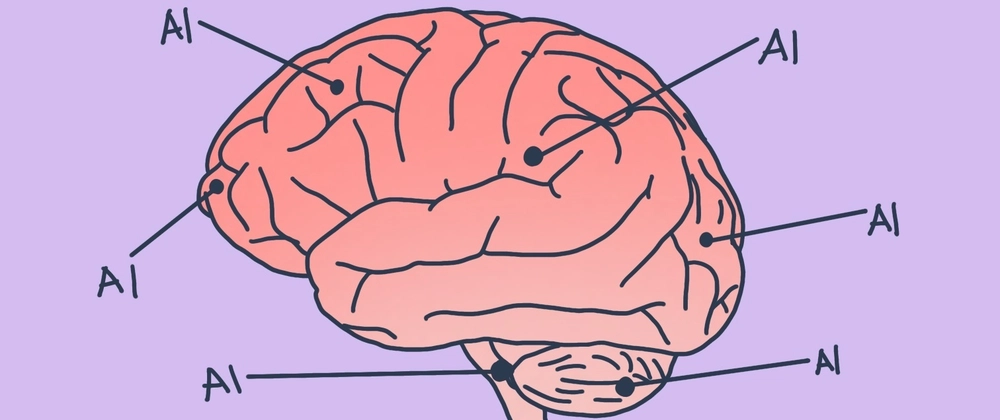"Will AI take my job?"
If you ask me that is a wrong question. The right one should be “ Can I outsmart AI?”
Tools like ChatGPT, GitHub Copilot, and other AI-powered assistants handling tasks from debugging to writing boilerplate code, may bring the feeling that there will be fewer jobs for developers.
But here's the truth: developers who learn to work with AI, rather than against it, will thrive in this new era.
In the long run, AI will not replace you, it will enhance your abilities.
Let’s break down why your job as a developer is not only safe but about to become more dynamic, impactful, and valuable than ever before.
Historical perspective: Tech changes that shaped development forever
Throughout software development, certain technological advancements have radically changed the industry. These industry shits weren’t just incremental, they completely transformed how developers think, work, and create.
Here’s a look at some of the pivotal shifts that paved the way for today’s AI revolution:
Version Control Systems
The introduction of version control tools like Git and SVN was revolutionary. Developers moved from difficult manual file-sharing methods to collaborative workflows where teams could simultaneously write, review, and merge code.
Impact:
- Boosted collaboration in open-source and enterprise projects.
- Made practices like Continuous Integration (CI) and Continuous Deployment (CD) feasible.
Cloud computing
Services like AWS, Azure, and Google Cloud eliminated the need for developers to manage physical servers.
Impact:
- Allowed for scalable application hosting.
- Introduced infrastructure as code (IaC), creating a bridge between development and operations (DevOps).
JavaScript frameworks
The rise of frameworks like React, Angular, and Vue.js revolutionized front-end development.
Impact:
- Standardized front-end architectures.
- Help developers to create dynamic, interactive user interfaces.
Headless CMS
Headless content management systems, decoupled content creation from its presentation.
Migrating from traditional CMS to headless CMS had a huge impact not only on content teams but also on devs:
- Allowed developers to deliver omnichannel digital experiences.
- Streamlined workflows by using APIs for dynamic content delivery.
Programming Languages
Each era of development brought new languages that redefined how software was built:
- C enabled low-level system programming with portability.
- Java introduced cross-platform development with its "write once, run anywhere" philosophy.
- Python and Ruby simplified scripting and web development, inspiring frameworks like Django and Ruby on Rails.
- Modern web development relies on JavaScript, which started out as a browser scripting language.
What about AI-powered tools?
As you can see from the examples mentioned above, new technologies don’t eliminate the need for expertise, they enhance it. AI tools are not designed to “think” like developers but to assist them in repetitive tasks, freeing up time for complex problem-solving.
Want to know how to make artificial intelligence your ally? Here are some strategies.
Strategies to Outsmart AI in development
Rather than fearing AI, use it as a collaborator. Here’s how:
Outsmart AI by using it as a coding assistant
Use tools like GitHub Copilot to:
- Automate routine coding tasks (writing boilerplate code).
- Converting Figma designs to code.
- Catch common bugs in real-time.
- Generate suggestions for optimizing algorithms.
- Build prototypes faster with AI-generated code snippets.
💡Treat these assistants as a starting point, not the final solution.
Shift focus to find solutions for high-level problem-solving tasks
AI excels at repetitive tasks but struggles with complex, abstract challenges. Developers should:
- Prioritize learning system architecture and design patterns.
- Deepen expertise in niche areas like cybersecurity or machine learning.
Build AI-powered side projects
Experimenting with AI APIs, like OpenAI or TensorFlow, can:
- Help you automate tedious parts of your workflow.
- Expand your portfolio by working on AI projects.
Use headless CMS to bring structured data into AI
Leverage structured content in headless CMS to orchestrate artificial intelligence. As an analysis tool, AI systems use structured data to maintain consistency, clarity, and organization when identifying patterns and making predictions.
Structured data in AI ensures that the data is structured properly and is accessible for AI-related operations such as:
- Auto-filling fields
- Generating product descriptions
- Improved search functions
Use cases: AI augmenting development
To understand AI’s potential, consider these real-world applications:
Automating code reviews
AI tools like DeepCode analyze pull requests to:
- Identify potential vulnerabilities.
- Suggest best practices for cleaner, more efficient code.
Prototyping faster with AI
Imagine integrating Figma with an AI tool that instantly converts designs into React components. AI makes rapid iteration cycles seamless.
Revolutionizing content delivery with Headless CMS
AI enables content personalization by analyzing user behavior and dynamically adapting what users see.
For instance, by pairing CMS with AI you can:
- Deliver region-specific content in real-time.
- Use AI for multilingual support
- Deliver personalized user experiences using AI-driven analytics
Conclusion: Work smarter not harder
We cannot stop the development of AI programming, even if we want to. I think the industry will enter an environment where human and AI programmers co-exist.
So to make the best of it you should focus on:
- Understanding the basics of AI
- Knowing the limits of AI
- Learning how to recognize AI deception
So, stop worrying about AI taking your job, start leading the AI revolution, and use it to push the boundaries of what you can achieve. After all, isn’t that why you became a developer in the first place?
Speaking of taking action, try out BCMS as a headless CMS for AI-driven content management.



Top comments (0)